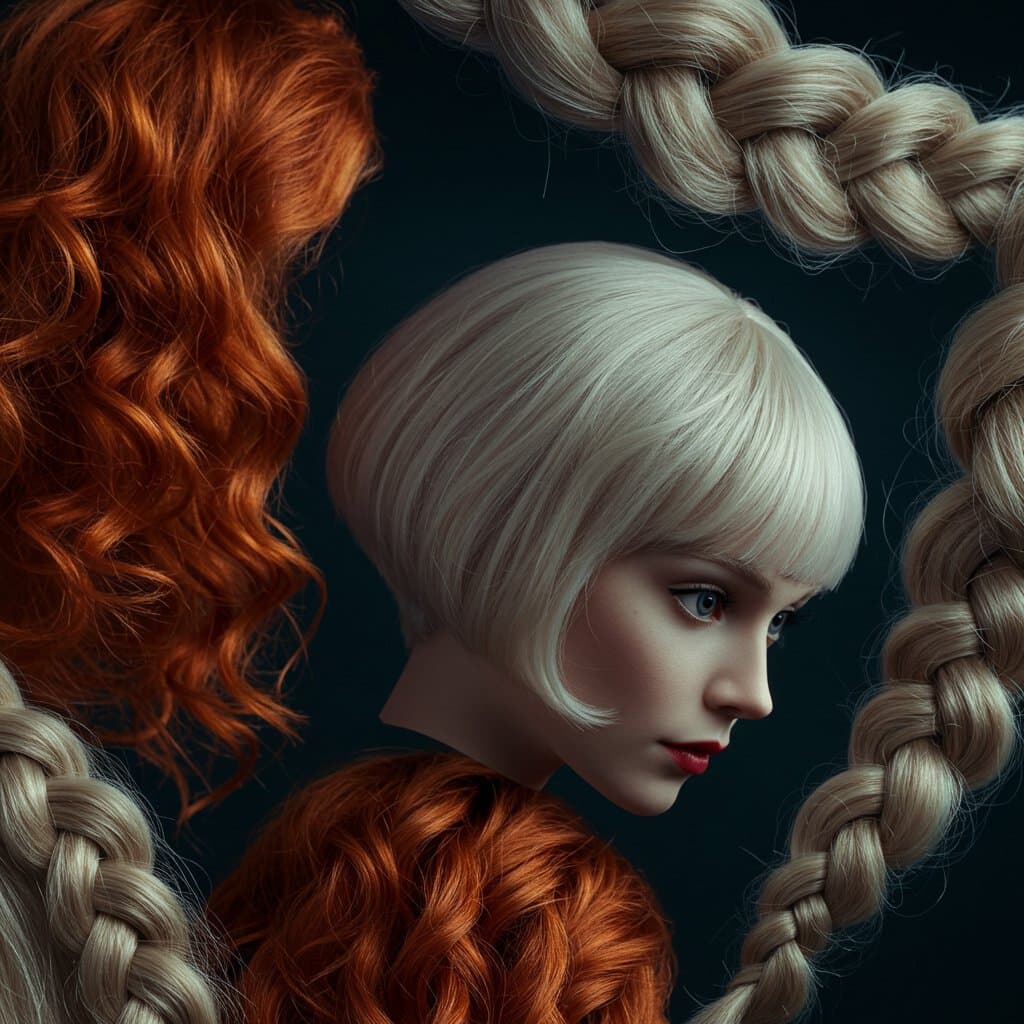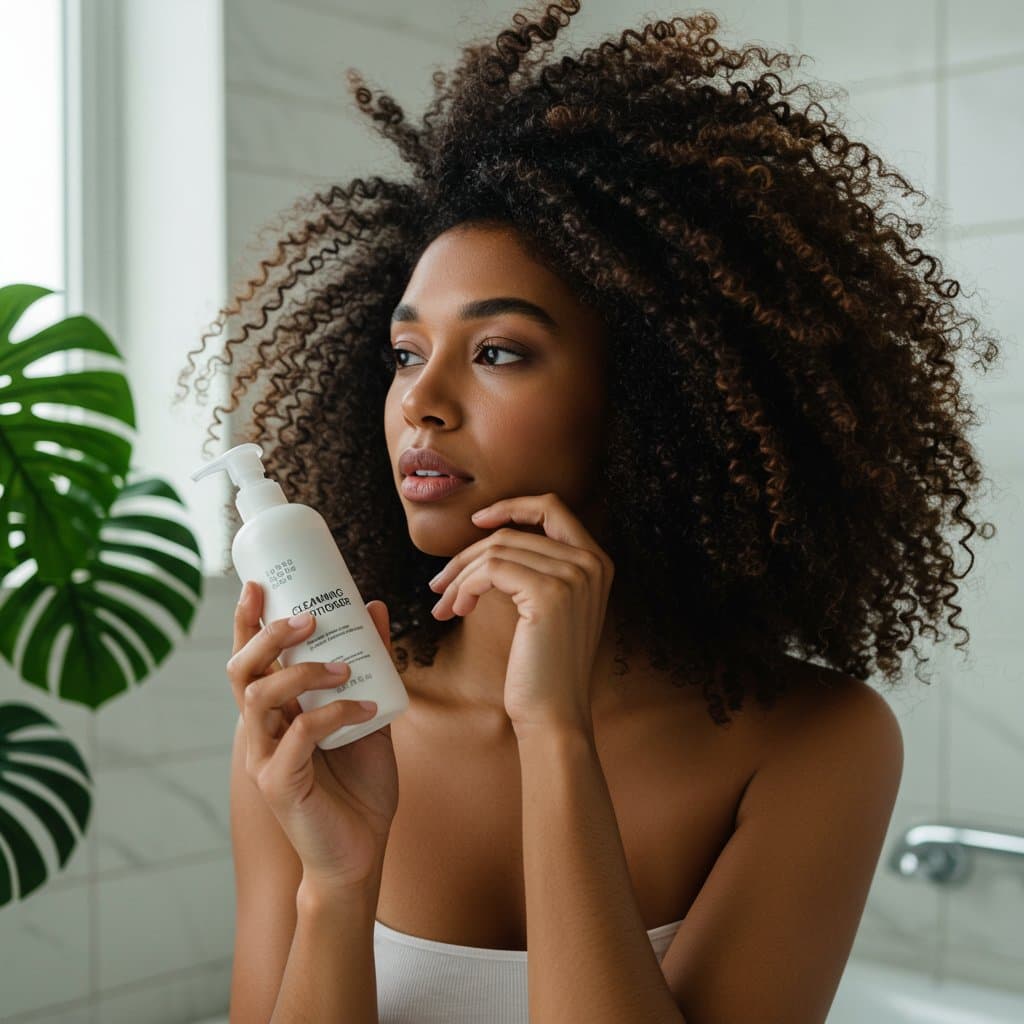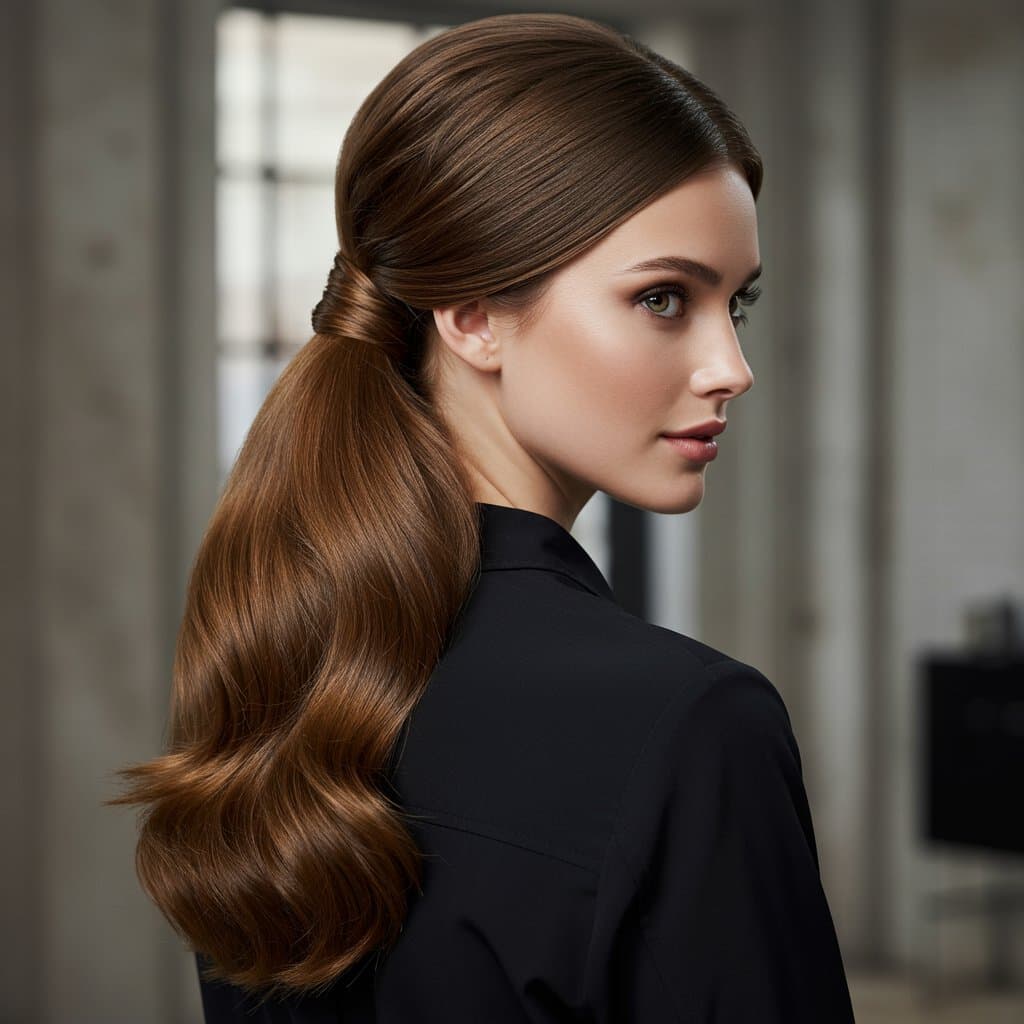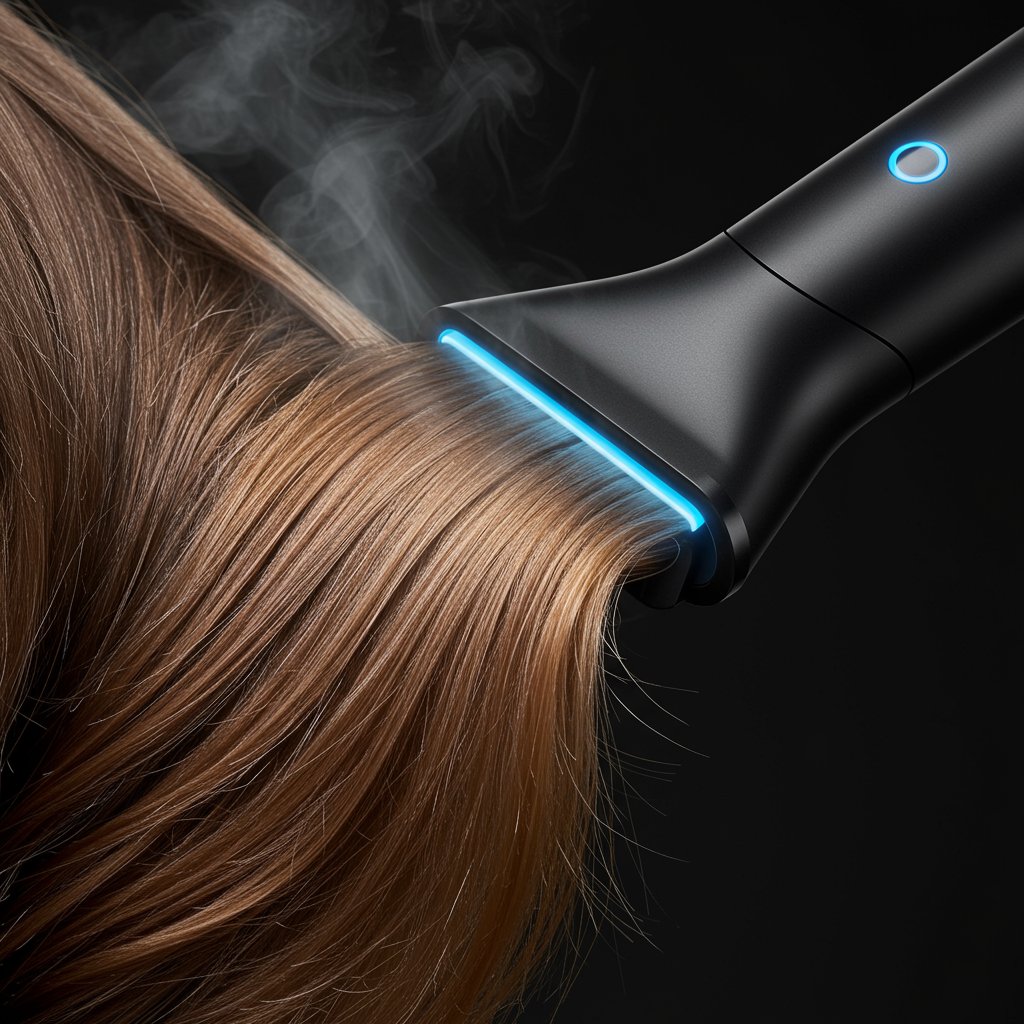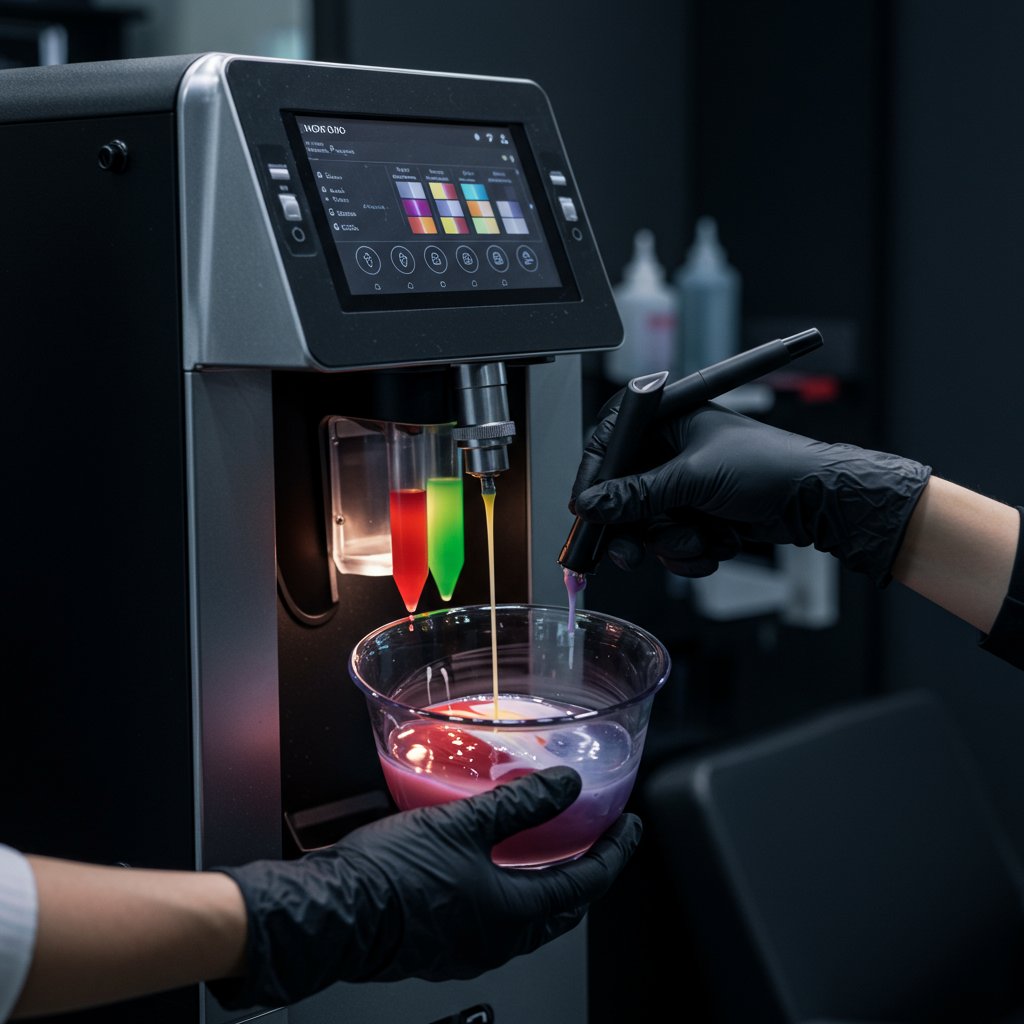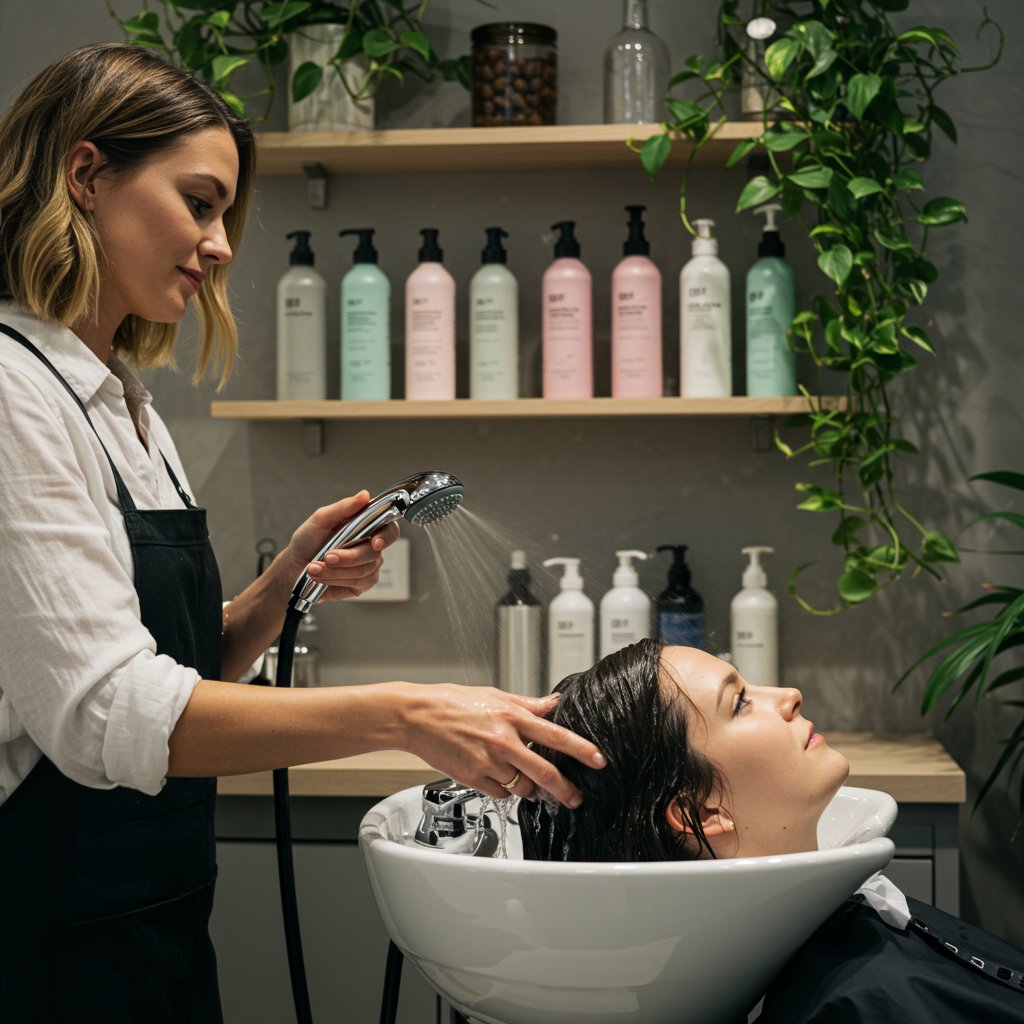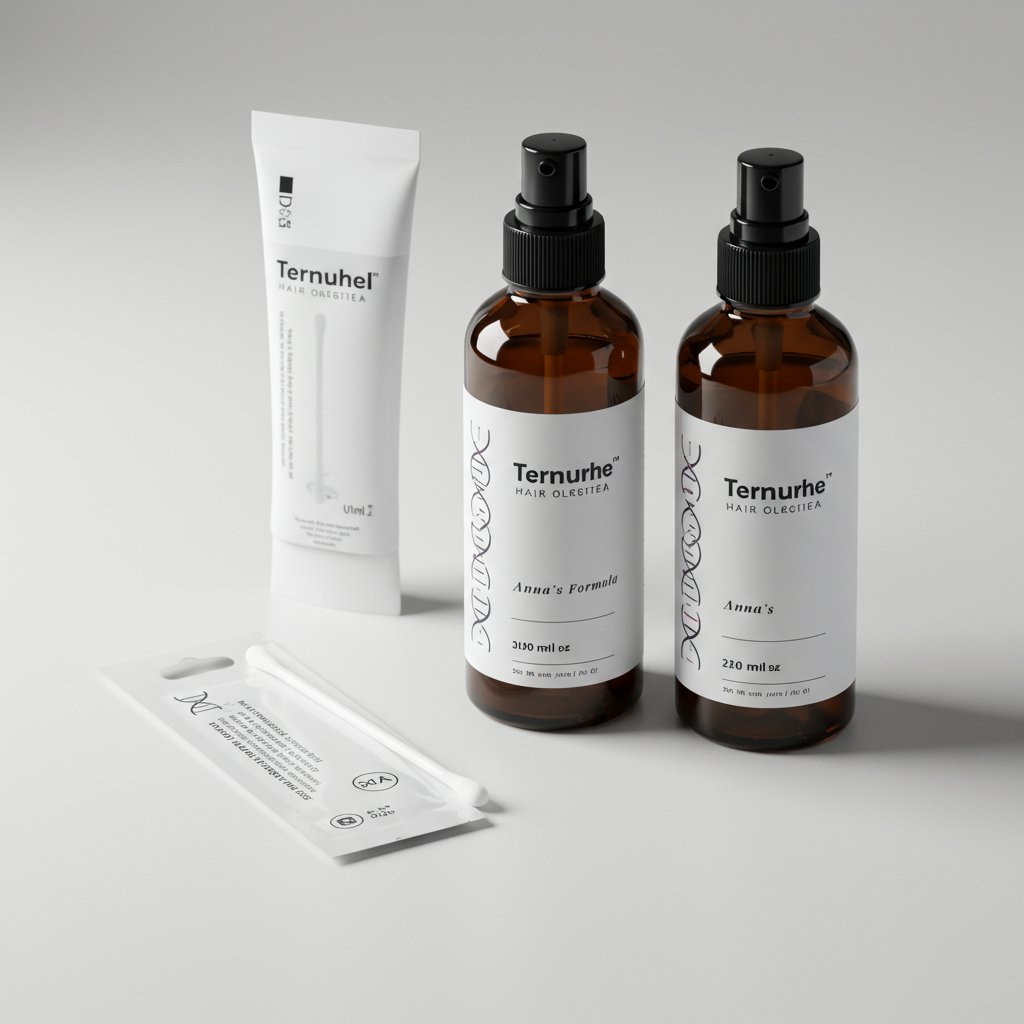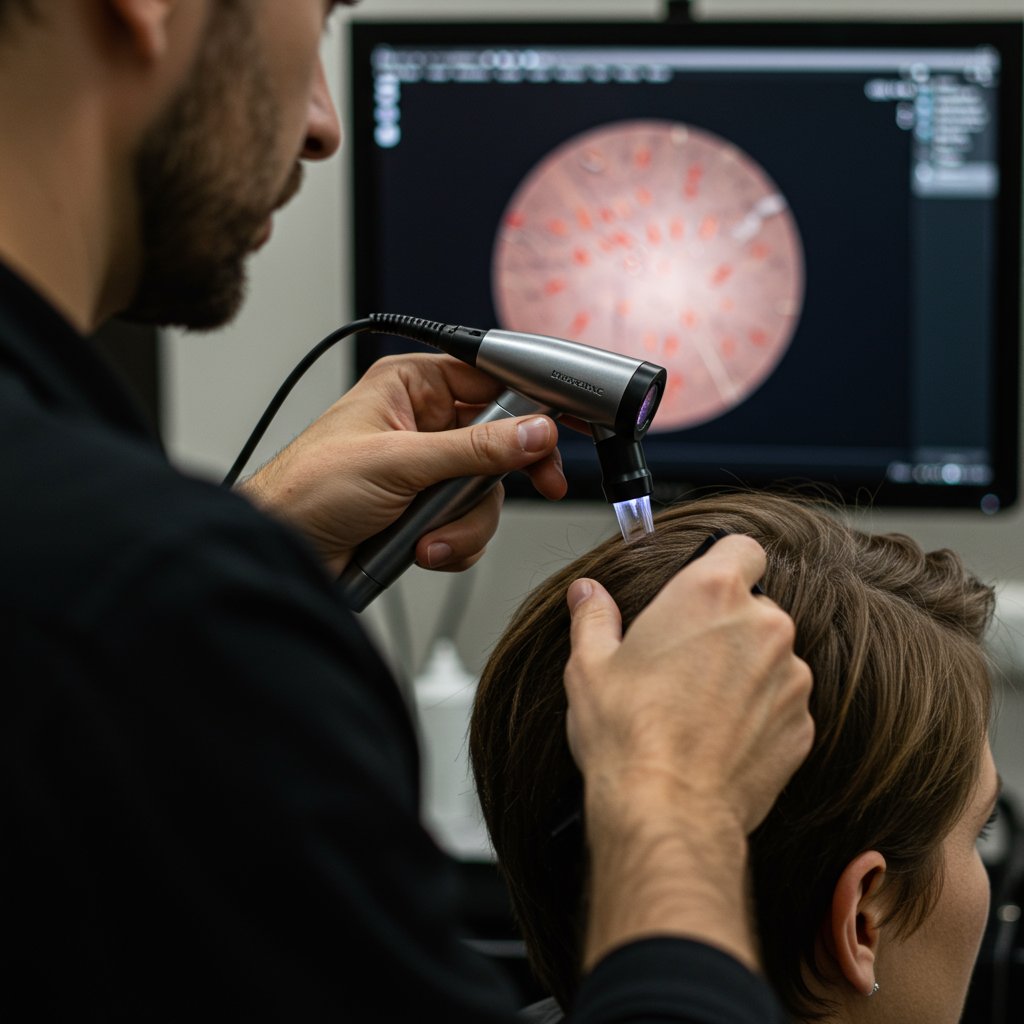The Dawn of a New Era: Welcome to the Future of Hair Styling
The world of cosmetology is on the brink of a monumental transformation, driven by relentless technological advancement. The familiar hum of hairdryers and the snip of scissors are now being harmonized with the silent, powerful processing of artificial intelligence, the precision of biometric sensors, and the sustainable promise of biotechnology. The future of hair styling is not a distant sci-fi fantasy; it's unfolding right now in progressive salons and research labs worldwide. This evolution goes beyond mere gadgets; it’s about creating a more personalized, efficient, and health-conscious approach to hair care that empowers both stylists and clients. Forget one-size-fits-all solutions. The new paradigm is one of hyper-personalization, where your unique hair biology, lifestyle, and aesthetic goals dictate every step of your hair journey, from diagnosis to daily maintenance.
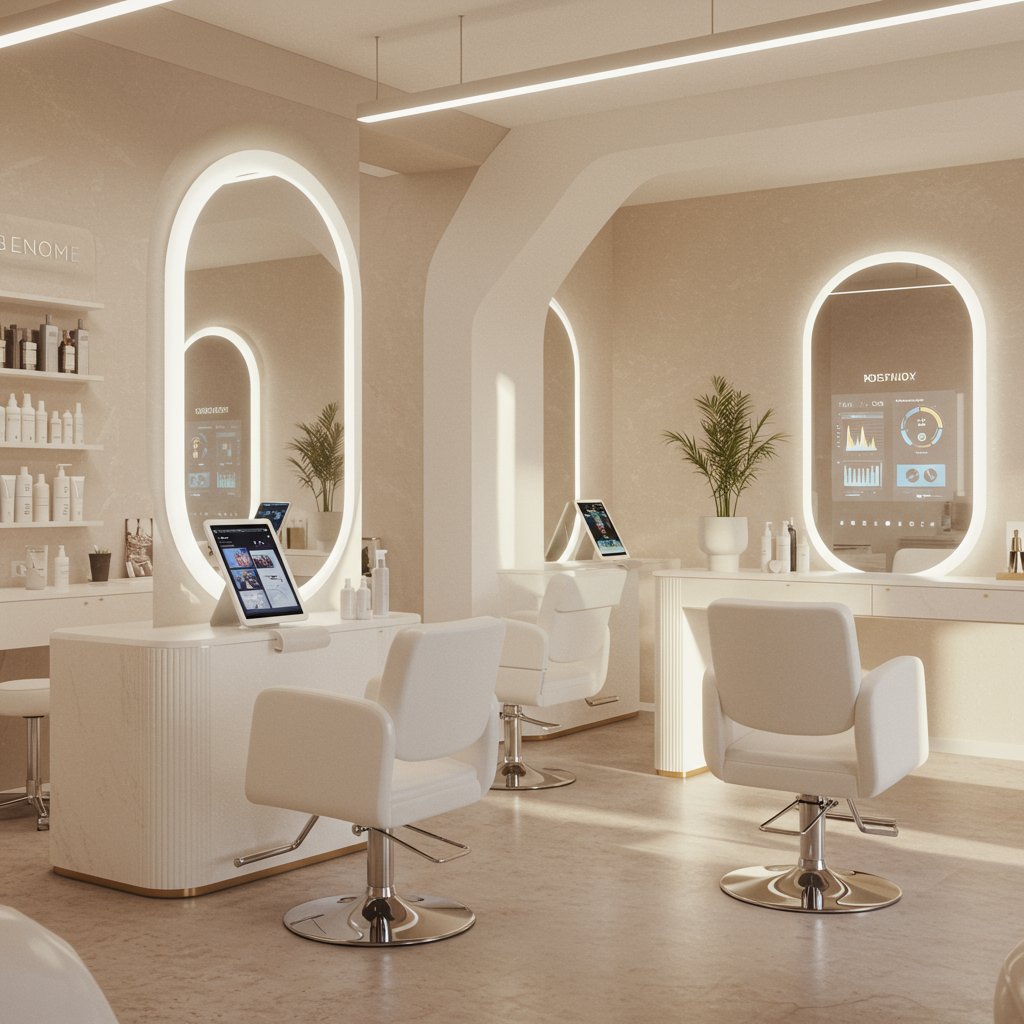
This comprehensive guide will explore the cutting-edge technologies and innovations set to redefine the salon experience. We will delve into the world of augmented reality consultations, where you can try on a dozen hairstyles without a single snip. We'll uncover the science behind smart tools that adapt to your hair's specific needs in real-time and explore revolutionary treatments that repair hair on a molecular level. From 3D-printed extensions to eco-conscious salon practices, we are witnessing a fusion of beauty, science, and sustainability. Prepare to be amazed by how technology is elevating the art of hairstyling into a precise science, promising healthier, more beautiful hair for everyone.
AI and Augmented Reality: Visualizing Your Perfect Look
The dreaded post-haircut regret may soon be a thing of the past, thanks to the integration of Artificial Intelligence (AI) and Augmented Reality (AR). These technologies are revolutionizing the consultation process, turning it from a conversation of hopeful descriptions into an interactive, visual collaboration. Imagine sitting in a salon chair and, using a tablet or a smart mirror, instantly seeing how you would look with a chic bob, vibrant copper tones, or flowing extensions. AR applications can map styles and colors onto your real-time video feed with stunning accuracy, accounting for your face shape, skin tone, and even your hair's natural texture.
Virtual Try-Ons and AI-Powered Recommendations
Beyond simple visualization, AI algorithms analyze countless data points to provide intelligent recommendations. By scanning your hair, an AI can assess its density, porosity, and health, then cross-reference this data with your facial structure and desired look to suggest the most flattering and achievable styles. This data-driven approach removes guesswork, helping stylists manage client expectations and co-create a look that is both beautiful and suitable for the client's hair type and maintenance commitment. This technology fosters a deeper trust between stylist and client, ensuring the final result is a shared vision brought to life with expert skill.
The In-Salon Consultation Reimagined
This technology doesn't replace the stylist's expertise; it enhances it. An experienced stylist can use these AR tools as a powerful communication aid, walking a client through different options and explaining why certain cuts or colors will work better than others. It allows for a more dynamic and engaging consultation, where clients feel more involved and confident in their decisions. The future salon consultation is a seamless blend of human artistry and digital precision, ensuring every client leaves not just satisfied, but truly thrilled with their transformation.
Smart Hair Tools: Intelligent Styling for Ultimate Hair Health
The days of single-temperature heat tools that scorch and damage hair are numbered. The future of hair styling at home and in the salon lies in 'smart' devices that prioritize hair health above all else. These intelligent tools are equipped with advanced sensors and microprocessors that analyze hair conditions in real time and adjust their settings accordingly. This responsive technology ensures optimal styling results without compromising the integrity of the hair shaft, leading to stronger, shinier, and more resilient hair over time.
Adaptive Heat Technology
A leading innovation is the smart hair dryer that uses infrared sensors to measure the hair's moisture levels and surface temperature up to 100 times per second. As you dry, the device continuously adjusts its heat output to prevent overheating and moisture loss, drying hair faster while protecting its natural hydration. Similarly, smart flat irons and curling wands feature predictive heat technology that recognizes the thickness of each hair section and adapts the temperature for consistent, damage-free styling from root to tip. This means no more 'frying' delicate ends or making multiple passes over the same section.
Data-Driven Hair Care Devices
The innovation doesn't stop with heat. Smart hairbrushes are emerging, embedded with sensors like accelerometers, gyroscopes, and conductivity sensors. As you brush, these devices analyze your brushing patterns, measure frizz, dryness, and split ends, and send a detailed report to a connected smartphone app. The app then provides a personalized hair health score and recommends specific products and techniques to improve your hair's condition. It's like having a personal trichologist in your hand, offering daily insights to guide your hair care routine.
The Revolution in Hair Color and Treatments
Chemical services like coloring and treatments are undergoing a radical, science-driven transformation. Technology is enabling unprecedented levels of customization and efficacy, moving far beyond traditional formulas. The future of hair color is not just about new shades, but about bespoke formulations created on-demand, while treatments are shifting from cosmetic cover-ups to genuine molecular repair.
Custom-Blended, On-Demand Color
Salons are beginning to adopt sophisticated machines that act as a personal color laboratory. A stylist can use a connected device to analyze a client's existing hair color, factoring in everything from undertones to the percentage of gray. They then input the desired target shade, and the machine precisely dispenses a unique, custom-blended formula from a range of base pigments and activators. This process eliminates waste, ensures perfect color matching and repeatability, and allows for infinite creativity. The result is a hair color that is truly one-of-a-kind, perfectly tailored to the individual.
Bio-Tech Repair and 3D-Printed Hair
On the treatment front, biotechnology is leading the charge. Scientists are developing bond-building treatments using bio-identical keratin and peptides that can repair broken disulfide bonds within the hair shaft at a molecular level, effectively reversing chemical and mechanical damage. Looking further ahead, the concept of 3D-printed hair extensions is becoming a reality. This technology could allow for the creation of custom-fit, biodegradable extensions that perfectly match the client's own hair texture, color, and density, offering a seamless and sustainable solution for adding volume or length.
Sustainability and Eco-Tech in the Salon
The beauty industry is increasingly focusing on its environmental impact, and the future of hair styling is green. Salons are embracing eco-tech innovations that reduce water and energy consumption, minimize waste, and promote the use of clean, sustainable ingredients. This shift is not just a trend but a fundamental responsibility, creating a healthier planet and a safer environment for both clients and salon professionals.
Water and Energy Conservation
Significant innovations are being made at the shampoo bowl. Water-saving showerheads are now available that can reduce water consumption by up to 65% without sacrificing pressure, thanks to technology that atomizes water into a fine, high-efficiency mist. Salons are also investing in energy-efficient appliances, LED lighting, and even renewable energy sources. This commitment to sustainability extends to operations, with digital booking systems reducing paper use and conscious waste management programs ensuring that materials like foils, color tubes, and plastics are recycled.
Clean Formulations and Biodegradable Materials
The demand for 'clean beauty' has pushed product manufacturers to innovate. The future lies in lab-grown, bio-synthesized ingredients that are both highly effective and ethically sourced, eliminating the need for animal-derived components or environmentally destructive harvesting. Packaging is also getting a major overhaul. Expect to see more water-soluble pods, refillable aluminum or glass containers, and biodegradable materials made from cornstarch or mycelium (mushrooms), drastically reducing the plastic footprint of the hair care industry.
The Rise of Hyper-Personalization: From DNA to Your Doorstep
If the last decade was about customization, the next is about true hyper-personalization. This trend leverages data and science to create hair care routines and products that are as unique as an individual's fingerprint. It's a holistic approach that considers genetics, lifestyle, and even environmental factors to deliver unparalleled results.
DNA-Based Hair Care
The most groundbreaking development in this area is DNA-based hair care. Companies can now analyze a customer's saliva sample to identify specific genetic markers related to hair characteristics like curliness, thickness, graying, and susceptibility to hair loss. Based on this genetic profile, they formulate shampoos, conditioners, and serums with the precise ingredients needed to address the individual's predispositions. This is the ultimate proactive approach, targeting potential issues before they even become visible.
Adaptive Subscription Models
Subscription services are also becoming more intelligent. Instead of receiving the same products every month, future services will use AI to adapt to your changing needs. By having you complete regular quizzes or by analyzing data from smart tools, the service can adjust your next shipment based on the season (e.g., more hydration in winter), your location (e.g., more UV protection for a sunny vacation), or recent chemical services you've had. This ensures your hair is always getting exactly what it needs, right when it needs it.
Advanced Diagnostics for Scalp and Hair Health
Healthy hair begins with a healthy scalp, and technology is providing stylists with powerful new tools to diagnose and treat scalp conditions with clinical precision. This bridges the gap between cosmetology and dermatology, allowing for a more informed and effective approach to hair care. By identifying issues at the microscopic level, stylists can recommend targeted treatments and products that address the root cause of problems like thinning, dandruff, or sensitivity.
Trichoscopy in the Salon
Professional salons are adopting handheld digital microscopes, known as trichoscopes, which can magnify the scalp and hair shaft up to 200 times. This allows the stylist and client to see a clear, detailed view of the scalp's condition, follicle health, hair density, and cuticle damage on a screen. Seeing this visual evidence is incredibly powerful for clients, helping them understand the 'why' behind their stylist's recommendations. A stylist can identify product buildup, inflammation, or early signs of hair thinning long before they are visible to the naked eye.
Tracking Progress Over Time
These diagnostic tools are not just for one-time analysis. They can be used to track the effectiveness of a treatment plan over time. By taking baseline images and comparing them during subsequent appointments, stylists can provide tangible proof of improvement. This data-driven approach builds client confidence and loyalty, as they can see measurable results from the professional services and home care products they are investing in, solidifying the stylist's role as a trusted hair health expert.
How to Embrace Hair Tech in Your Routine
Feeling excited but not sure where to start? Integrating hair technology into your life doesn't require a complete overhaul. Here are a few practical ways to embrace the future of hair styling today:
- Ask Your Stylist: During your next salon visit, ask your stylist about any new diagnostic tools or treatments they offer. They are your best resource for understanding what technologies would be most beneficial for your specific hair type and concerns.
- Invest in One Smart Tool: If you're looking to upgrade your home toolkit, consider starting with a single smart device. A smart hairdryer that prevents heat damage is an excellent investment for anyone who styles their hair regularly.
- Try a Virtual Try-On App: Before your next big color change or cut, play around with a reputable AR hair styling app. It can be a fun, no-risk way to explore new possibilities and find inspiration to bring to your stylist.
- Seek Out Sustainable Brands: Support the eco-tech movement by choosing brands that use sustainable packaging, clean ingredients, and ethical sourcing practices. Look for certifications and transparency from the brands you purchase.
Frequently Asked Questions (FAQ)
Q1: Is this new hair technology expensive for consumers?
A: Initially, some advanced technologies and smart tools may come with a higher price tag, similar to any new innovation. However, as technology becomes more widespread, prices are expected to become more accessible. Furthermore, investing in a tool that prevents damage can save money on restorative treatments in the long run.
Q2: Will AI and robots replace human hairstylists?
A: No, technology is designed to be a tool that enhances, not replaces, the skill and creativity of a human stylist. The artistry, personal connection, and dexterity involved in cutting and styling hair are uniquely human. AI and AR will handle the data analysis and visualization, freeing up stylists to focus on the creative and technical aspects of their craft.
Q3: How accurate are the AR virtual hair try-ons?
A: The accuracy has improved dramatically in recent years. High-quality AR applications now offer very realistic previews, taking into account lighting, head movement, and natural hair texture. While it's a powerful guide, it's still best used as a consultation tool in collaboration with a professional stylist who can assess your hair's real-world capabilities.
Q4: Are DNA-based hair products really more effective?
A: The science is promising. By targeting genetic predispositions, these products can offer a more proactive and tailored approach than generic formulations. While individual results can vary, the principle of using ingredients that are scientifically matched to your hair's genetic needs is a significant step forward in personalized care.
Q5: Where can I experience these new salon technologies?
A: High-end, forward-thinking salons in major metropolitan areas are often the first to adopt new technologies like scalp diagnostics and custom color machines. As these innovations become more established, you can expect to see them become more widely available. Research salons in your area that specialize in hair health or promote their use of modern technology.
Conclusion: Your Hair, Reimagined
The future of hair styling is a thrilling convergence of art and algorithm, nature and nurture, personalization and sustainability. Technology is not stripping the soul from hairstyling; it is empowering it with unprecedented insight and precision. From the initial AI-driven consultation to the DNA-matched products you use at home, every step of your hair care journey is becoming smarter, safer, and more attuned to you as an individual. These innovations promise not only more beautiful and predictable results but also healthier hair and a healthier planet. The next time you visit a salon, look around. You might just catch a glimpse of the future—a future where your hair's full potential is finally unlocked through the perfect partnership of human expertise and technological brilliance.



